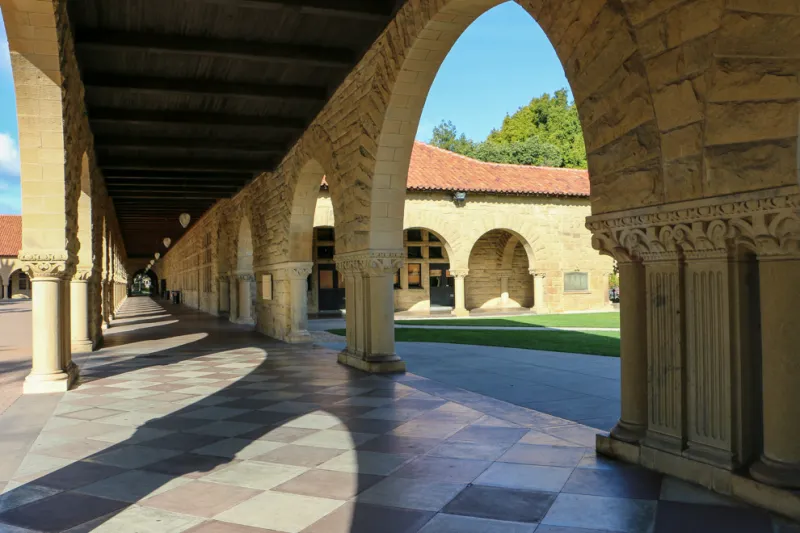A Stanford-led team of researchers is plowing forward in the field of myosin and heart disease with the help of a $10 million grant from the National Institute of General Medical Sciences (NIGMS). The international team will use its award money to develop treatments for the world’s most common genetic heart condition — hypertrophic myopathy (HCM) — which affects over one in every 500 people.
No proven therapy exists for HCM because no appropriate clinical trials have been performed. Current treatments for HCM are directed toward relief of its symptoms, rather than the mutations that cause the disease. HCM can be caused by disparate mutated genes in myosin — a fibrous protein involved in the motion of muscle cells and others — and myosin-related molecules, so giving the same treatment to a heterogeneous group of patients can lead to discrepancies in the treatment’s effectiveness.
To address this problem, biochemistry professor James Spudich Ph.D. ’68, pediatrics and cardiology professor Daniel Bernstein and cardiovascular medicine associate professor Sean Wu B.S. ’92 led a research project focusing on how mutations in myosin — specifically in the heart — lead to the development of HCM. They worked with researchers from the University of California-Santa Barbara, the University of Washington and the Institut Curie in Paris to consolidate their expertise and take different approaches to the research.
“We are examining this problem at multiple different scales: from the individual molecule to the cell to the tissue, to figure out why these mutations [in myosin] cause life-threatening diseases like hypertrophic cardiomyopathy,” Bernstein said.
He hopes that in doing so, the team will be able to develop more effective therapeutic treatments for HCM. Given greater understanding of the gene mutations’ different cell mechanisms, the team will be able to segregate patients with HCM and provide personalized, precision-based treatment that would optimize the effectiveness of the treatment.
Initially, the team received a pilot and seed grants from multiple institutes, including Stanford’s Maternal and Child Health Research Institute and its Cardiovascular Institute. Though these pilot and seed grants have supported the team in its research, Spudich said the team hoped for a greater sum of funds to draw more experts to the project from around the world. With this aspiration in mind, the team applied for the Collaborative Program Grant for Multidisciplinary Teams (RM1), funded by the NIGMS.
Since each institution applying for an RM1 grant is limited to a single submitted application, the team was first selected through an internal review process managed by the Stanford School of Medicine. From there, the team’s proposal competed for RM1, eventually becoming one of three NIGMS awardees.
“We were ecstatic to find out that we were being funded, given that very few major proposals in this category were funded by the NIGMS,” Spudich said. “We were extremely appreciative that the NIGMS is doing what it can to help support the understanding of such critically important clinical problems.”
Wu attributes the perseverance of the team through years of research to the team’s strong collaboration and passion towards its research and the occasional seed grants that have helped the team financially.
“[The team] have been a very collaborative and interactive group,” Wu said. “Whenever we discuss science, we always get really excited about it. It’s also the idea of what we’re doing is so compelling that motivates us to persevere.”
Unlike seed and pilot grants, the RM1 grant will do more than cover the funds for core research and generation of preliminary data — the team can take the next step in its work: transition to testing methods that can help prevent the progression of HCM. The team can also scale up its research to take on bigger projects and incorporate more areas of expertise from other institutes.
Equipped with the RM1 grant, the team is transitioning its research from figuring out the mechanism of mutations in myosin to identifying potential methods that would disrupt the pathological mechanism. From there, the team plans to partner with pharmaceutical companies for further testing and drug development, working toward therapeutic treatments tailored to each patient with HCM.
The team has also expanded its research on myosin to developing a greater understanding of not only the effects of myosin mutations on heart muscles, but on skeletal muscles and other myosin-related organs in the human body as well. Studying myosin mutations in more locations can help the team develop therapeutic approaches for a larger scale of myosin-related diseases.
Spudich himself has co-founded two biotech companies, Cytokinetics and MyoKardia, that aim to develop therapeutic treatments for cardiovascular diseases. MyoKardia is developing a molecular agent to treat HCM that is currently in phase three of clinical trials.
Contact Rachel Wu at rwu2579 ‘at’ gmail.com.
